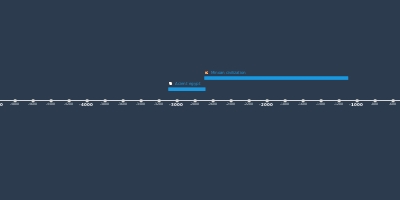The 17th century (dec 30, 1601 – aug 30, 1700)
Description:
Fashions in the early seventeenth century continued the trends of the previous century: men's doublets and women's bodices were worn tight and stiffened with rigid stays or padding; women's skirts were given full, rigid shapes with the help of farthingales, or hoops; and the garments of both sexes were laden with ornamentation, from jewelry to lace to the showiness of multiple contrasting fabrics. By the 1620s, however, styles began to change fairly dramatically. While the garments worn remained the same, such as the doublet, breeches, and hose for men and long gowns for women, the overall trend through the midcentury was toward softness and comfort. To allow for easier movement, waistlines on doublets and women's bodices rose higher, and the padding on both doublets and bodices was removed. The starched ruffs and whisks that once encircled the neck were replaced with the softer, more comfortable falling and standing bands. Women's sleeves began to rise, showing first the wrist and then the entire forearm. With the exception of petticoat breeches, men's breeches lost their bagginess and became slimmer and easier to move in. People continued to value rich materials and exquisite design, but they set aside the rigid formality of earlier years and didn't add ornament for ornament's sake. Overall, the trend through the first sixty years of the century was toward looseness, comfort, and elegance.Added to timeline:
Date:
dec 30, 1601
aug 30, 1700
~ 98 years
